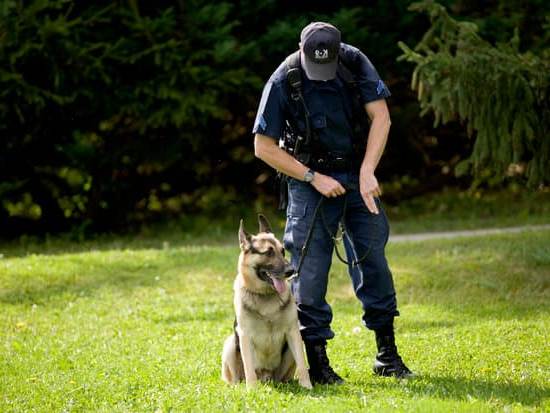Why is positive dog training effective? Positive dog training is a method that focuses on rewarding and reinforcing good behavior rather than punishing bad behavior. This approach has been proven to be effective in achieving lasting behavior modification and building a strong bond between dogs and their owners.
In this article, we will explore the science behind positive dog training, its impact on building trust and communication, as well as its adaptability to different dogs and situations. We will also delve into real-life success stories that demonstrate the effectiveness of positive reinforcement. If you’re curious about why positive dog training works, keep reading to find out more.
Positive dog training has gained popularity due to its effectiveness in shaping a dog’s behavior through positive reinforcement. By using rewards such as treats, praise, and playtime, this method encourages dogs to repeat desirable behaviors, ultimately leading to long-term behavior modification. In contrast to traditional punishment-based methods, positive reinforcement focuses on creating a positive learning experience for the dog.
Stay tuned as we uncover the science behind positive dog training and how it compares to traditional training methods. We will also explore how this approach strengthens the bond between you and your furry companion while creating an open line of communication during training sessions.
Additionally, we will look at specific situations where positive reinforcement has led to successful behavior modification in various breeds of dogs. So if you want to learn more about why positive dog training is effective for both dogs and their owners, continue reading for insights backed by scientific evidence and real-life experiences.
The Science Behind Positive Dog Training
Positive dog training is not just effective; it is also based on science. This training method relies on the principles of behavioral psychology to shape and modify a dog’s behavior. By using positive reinforcement, such as treats, praise, or toys, dogs learn to associate certain behaviors with pleasant consequences. This creates a strong motivation for them to repeat those desirable behaviors in the future.
The science behind positive dog training lies in its ability to create new neural pathways in the dog’s brain. When a dog receives a reward for exhibiting a desired behavior, dopamine is released in their brain, creating a sense of pleasure and reinforcing that behavior. Over time, this repetitive process forms a habit, making the behavior more likely to occur naturally without the need for constant rewards.
In contrast to traditional training methods that may rely on punishment or dominance-based techniques, positive reinforcement has been shown to be more effective in producing long-term changes in behavior. Studies have demonstrated that dogs trained using positive methods exhibit less stress and fear-related behaviors compared to those trained using aversive methods.
In addition, they also exhibit greater levels of obedience and are more willing to engage in training sessions. This is why positive dog training is effective not only in shaping desirable behaviors but also in creating a trusting and supportive relationship between the owner and the dog.
- Positive reinforcement creates new neural pathways in the dog’s brain
- Dogs are more willing to engage in training sessions
- Studies have shown that dogs trained using positive reinforcement exhibit less stress and fear-related behaviors
Building Trust and Bond With Your Dog
Positive dog training is effective for several reasons, one of which is the strong emphasis it places on building trust and a bond between the owner and the dog. Unlike punitive or coercive methods, positive reinforcement training techniques focus on rewarding desired behaviors instead of punishing undesirable ones. This creates a more harmonious relationship between the owner and their furry companion.
Research has shown that using positive reinforcement in dog training can lead to a stronger bond and better communication between the pet and its owner. When dogs are trained using positive methods, they are more likely to feel secure and confident, thereby enhancing their trust in their owners. This trust forms the foundation for a strong bond that ultimately improves obedience and overall behavior.
In addition to building trust, positive reinforcement techniques also foster a deeper understanding between dogs and their owners. By utilizing rewards such as treats or praise, owners can effectively communicate what behaviors are desirable, leading to clearer expectations for the dog. This mutual understanding promotes a healthier dynamic, making it easier for both parties to work together towards training goals.
| Reasons Positive Dog Training Is Effective | Description |
|---|---|
| Building Trust and Bond with Your Dog | Effectively creating a harmonious relationship based on trust between the owner and their pet. |
| The Science Behind Positive Dog Training | Explaining how positive reinforcement affects behavior compared to traditional training methods. |
Long-Term Behavior Modification
Positive dog training is not just effective in the short term; it also leads to lasting behavior changes in dogs. This is because positive reinforcement focuses on rewarding desired behaviors, which motivates dogs to repeat those behaviors in the future. By consistently rewarding and reinforcing these behaviors, dogs learn what is expected of them, leading to long-term behavior modification.
The use of positive reinforcement in dog training has been shown to be highly effective in modifying a wide range of behaviors. Whether it’s teaching a puppy to be house trained, addressing separation anxiety, or managing aggression issues, positive training methods have been successful in bringing about lasting changes in a dog’s behavior.
In addition to this, positive reinforcement creates a positive association with both the behavior and the trainer. This means that dogs are more likely to exhibit the desired behavior willingly and enthusiastically. As a result, the modifications made through positive training tend to endure over time, leading to well-behaved and happy dogs.
Overall, the evidence shows that positive dog training is effective for creating enduring changes in a dog’s behavior. Whether it’s teaching basic obedience or addressing more complex behavioral issues, positive reinforcement has been proven time and again to lead to long-term modification of behavior without any of the negative side effects associated with punishment-based methods.
Avoiding Negative Side Effects
Positive dog training is an effective and humane way to train your furry companion. This method focuses on rewarding good behavior rather than punishing bad behavior, which can lead to a stronger bond and better communication between you and your dog. But what makes positive dog training so effective, and why should you consider this approach for your canine friend? Let’s explore the benefits of positive reinforcement and how it helps in avoiding negative side effects.
Eliminating Fear and Aggression
One of the key reasons why positive dog training is effective is its ability to eliminate the risk of creating fear or aggression in dogs. With traditional punishment-based training methods, dogs may associate training sessions with fear or discomfort, leading to defensive or aggressive behavior. On the other hand, positive reinforcement encourages dogs to engage in desired behaviors willingly, creating a safe and trusting environment for learning.
Building Confidence and Trust
Positive reinforcement helps build confidence in dogs by focusing on their strengths and accomplishments. This approach reinforces the idea that good behavior leads to positive outcomes, instilling a sense of trust between the owner and the dog. By avoiding negative side effects such as anxiety or stress, dogs are more likely to feel secure in their environment and develop a strong bond with their owners.
Promoting Mental Well-Being
When dogs are trained using positive methods, they experience lower stress levels and a higher sense of well-being. This not only leads to better overall behavior but also contributes to their mental health and happiness. Positive reinforcement avoids the potential negative effects of punishment-based training methods, resulting in a more confident, balanced, and emotionally stable pet.
By understanding the importance of avoiding negative side effects through positive dog training, you can ensure a harmonious and fulfilling relationship with your canine companion while achieving successful training outcomes.
Adaptability to Different Dogs and Situations
Positive dog training is effective not only because of the science behind it, but also due to its ability to be adaptable to different dogs and various training scenarios. This form of training can be tailored to suit the needs of individual breeds and even specific personality traits within those breeds.
Tailoring Training for Different Breeds
One of the reasons why positive dog training is effective is its adaptability to different dog breeds. Each breed has unique characteristics, temperaments, and learning styles.
Positive reinforcement allows trainers to adjust their methods based on these differences, ensuring that each dog receives the most effective form of training for their specific needs. For example, high-energy breeds may respond best to active and engaging training methods, while more laid-back breeds may benefit from a more relaxed and patient approach.
Individualizing Training for Each Dog
Furthermore, positive reinforcement can be adapted to suit the individual personalities and behaviors of each dog within a specific breed. Just like humans, dogs have their own quirks, fears, and preferences. Positive training methods allow for personalized approaches that consider these unique traits, resulting in a more successful and harmonious training experience overall.
Effectiveness in Various Training Scenarios
Another reason why positive dog training is effective is its versatility in different training scenarios. Whether you are working on basic obedience commands or attempting more complex tricks and behaviors with your dog, positive reinforcement can be effectively applied across the board. The adaptability of this method allows for consistent and reliable results regardless of the specific training goals or challenges at hand.
Overall, the adaptability of positive dog training plays a crucial role in its effectiveness. By tailoring techniques based on breed, individual dogs’ personalities, and different types of training situations, positive reinforcement provides a versatile and customizable approach that leads to successful training outcomes.
Effective Communication With Your Dog
Positive dog training is effective for many reasons, one being the enhanced communication it fosters between the owner and their canine companion. By using positive reinforcement techniques, such as treats, praise, and toys, owners are able to clearly and effectively convey their expectations to their dogs. This form of communication helps create a harmonious relationship based on mutual understanding and respect.
In positive dog training, effective communication goes beyond just commands and cues. It also involves understanding the body language and subtle signals that dogs use to express themselves. By using positive reinforcement methods, owners can learn to read their dog’s cues more effectively and respond in a way that strengthens the bond between them.
Additionally, positive training encourages open lines of communication between the owner and the dog. Instead of instilling fear or anxiety in the animal, positive reinforcement builds trust and confidence. This allows the dog to feel comfortable expressing themselves without fear of punishment, leading to a more cooperative and willing participant in training sessions. Overall, effective communication is at the core of why positive dog training is so successful in building a strong relationship based on understanding and trust.
Real-Life Success Stories
Positive dog training has been proven effective through numerous real-life success stories from dog owners who have experienced the positive impact of this training method on their pets. One of the main reasons why positive dog training is effective is because it focuses on rewarding and reinforcing desired behaviors, rather than punishing or correcting unwanted behaviors.
This creates a more positive learning environment for the dog, leading to better results and a stronger bond between the owner and their pet.
For example, many owners have reported significant improvements in their dogs’ behavior through positive reinforcement techniques such as clicker training, where a clicking sound is used to mark the correct behavior followed by a treat. This method has been successful in teaching dogs various commands and tricks while also improving their overall obedience and responsiveness.
In addition, positive reinforcement has been particularly effective in addressing fear-based behaviors, such as anxiety or aggression, by building confidence and trust in the dog.
Furthermore, positive dog training has been instrumental in modifying specific behaviors that were previously challenging for the owners. For instance, cases of leash pulling, excessive barking, and destructive chewing have been successfully addressed through positive reinforcement methods. These real-life success stories serve as compelling evidence of the effectiveness of positive training in achieving long-term behavior modification and enhancing the relationship between dogs and their owners.
Additionally, many professional dog trainers and behaviorists have also shared success stories that highlight the adaptability of positive training to different dogs and situations. Whether it’s basic obedience training for a young puppy or addressing complex behavioral issues in an adult dog, positive reinforcement techniques have consistently proven effective across various breeds and individual temperaments. These success stories demonstrate how positive dog training can be tailored to meet the unique needs of each dog while still achieving remarkable results.
| Positive Dog Training Success Stories | Impact |
|---|---|
| Improved obedience and responsiveness | Strengthens bond between owner and dog |
| Addressing fear-based behaviors | Modifying challenging behaviors such as leash pulling or excessive barking |
| Adaptability to different dogs and situations | Tailoring training to meet unique needs while achieving remarkable results |
Conclusion
In conclusion, positive dog training is effective because it harnesses the power of positive reinforcement to shape a dog’s behavior in a gentle and humane manner. By utilizing rewards and praise to encourage desired behaviors, positive training creates a lasting impact on a dog’s behavior while building a strong bond of trust between the owner and their pet.
This method has been scientifically proven to be more effective than traditional punishment-based training, as it focuses on rewarding good behavior rather than punishing bad behavior.
Furthermore, positive dog training leads to long-term behavior modification, ensuring that the desired behaviors become ingrained in the dog’s routine. This approach also eliminates the risk of creating fear or aggression in dogs, as opposed to punishment-based methods. Additionally, positive training is highly adaptable to different dogs and situations, making it suitable for all breeds and individual personalities.
Ultimately, the communication between the owner and their dog greatly improves through positive reinforcement, establishing clear boundaries and expectations. Real-life success stories from countless dog owners attest to the overall effectiveness and benefits of positive dog training. Using this method not only results in well-behaved dogs but also strengthens the owner-dog relationship for years to come.
Frequently Asked Questions
Does Positive Reinforcement Actually Work?
Positive reinforcement has been proven to be effective in dog training. By rewarding desired behaviors with treats or praise, dogs learn to associate those behaviors with positive outcomes and are more likely to repeat them.
What Is the Most Effective Method of Dog Training?
The most effective method of dog training varies depending on the individual dog and their specific needs. However, positive reinforcement, using treats, toys, or praise, is generally considered a highly effective and humane approach to training.
Why Is Positive Reinforcement Better Than Punishment for Dogs?
Positive reinforcement is better than punishment for dogs because it creates a positive learning environment. Punishment can cause fear and anxiety in dogs, leading to potential behavior problems. In contrast, positive reinforcement builds trust and strengthens the bond between dog and owner while promoting good behavior.

Welcome to the blog! I am a professional dog trainer and have been working with dogs for many years. In this blog, I will be discussing various topics related to dog training, including tips, tricks, and advice. I hope you find this information helpful and informative. Thanks for reading!





